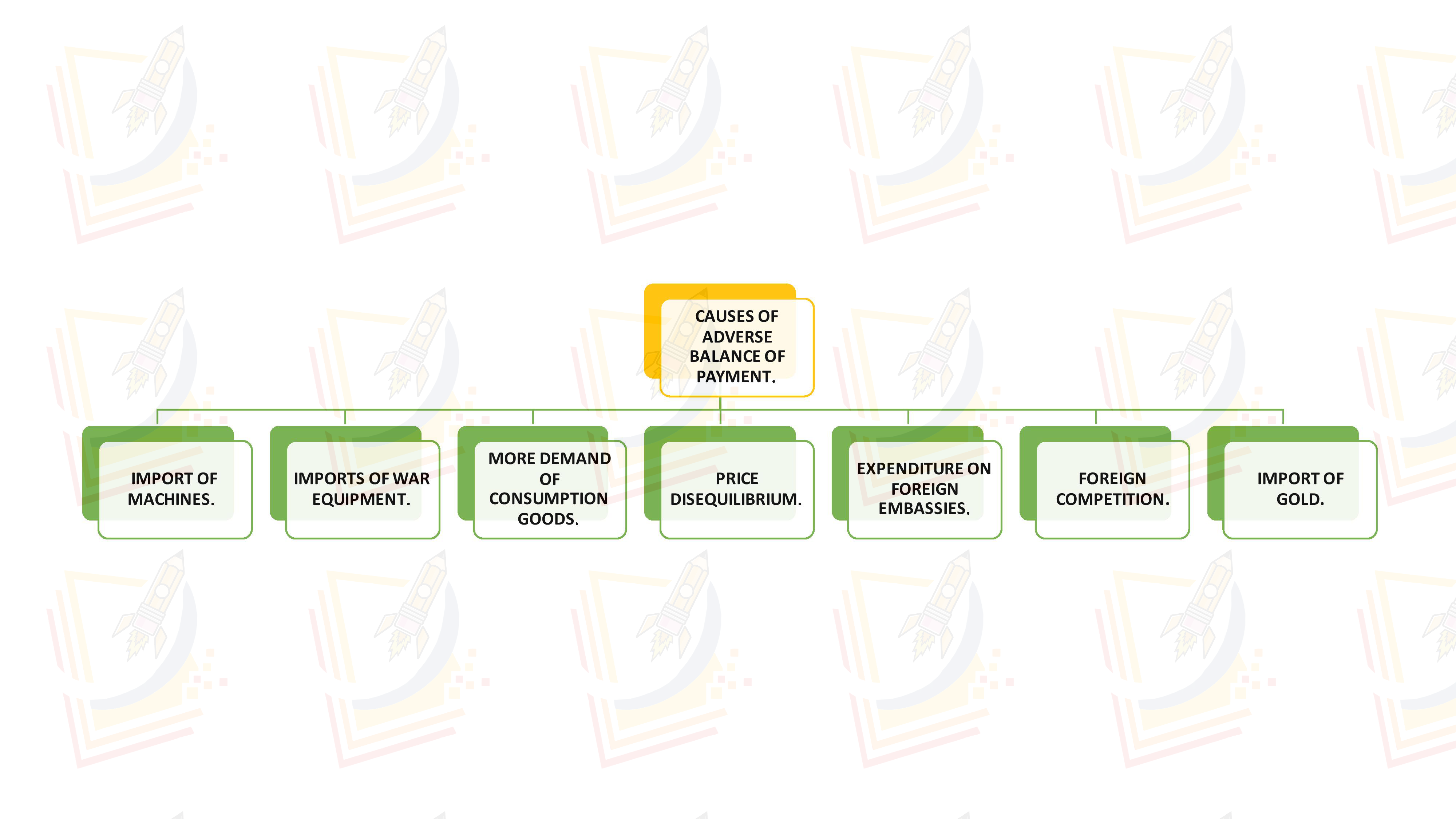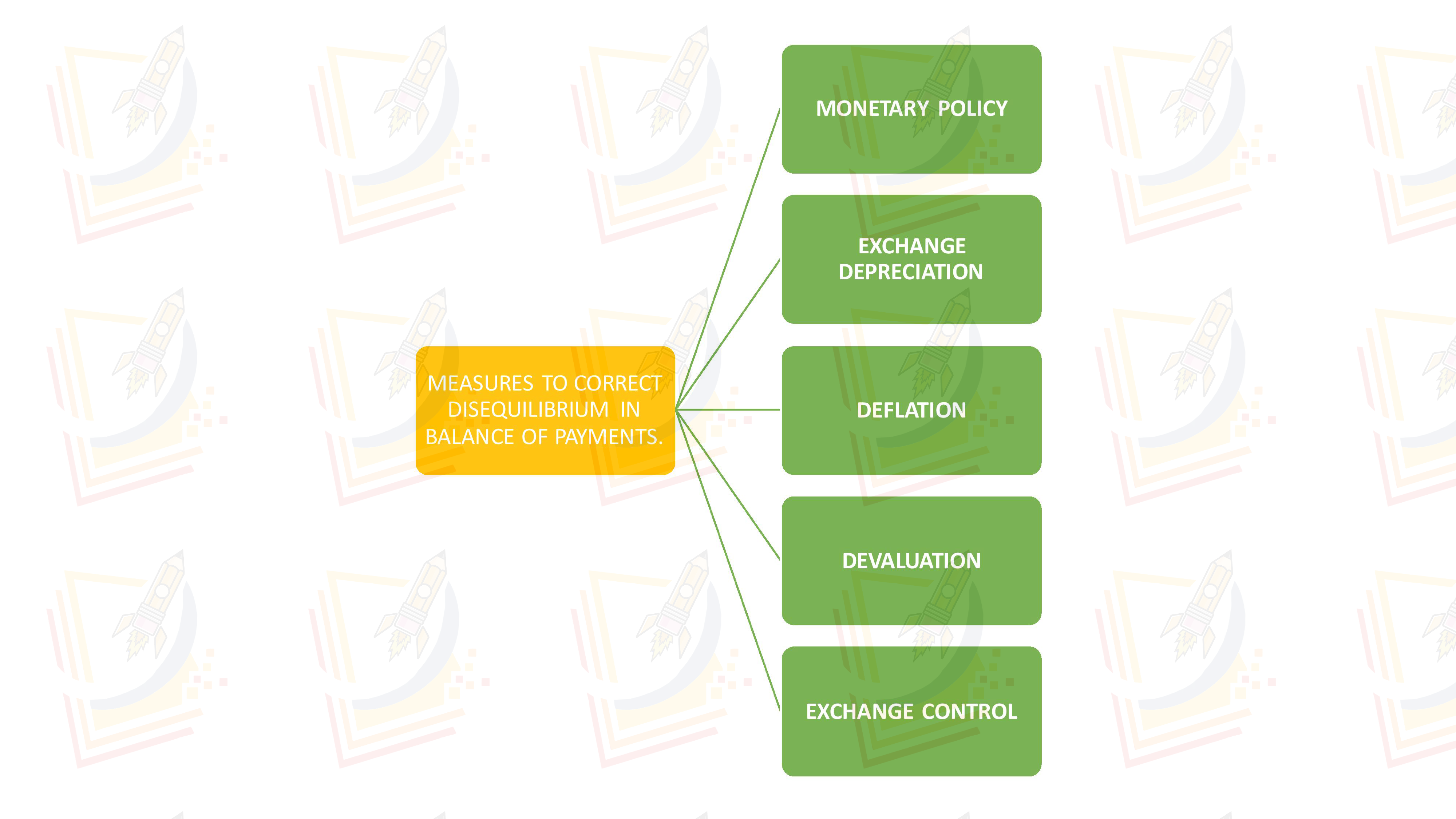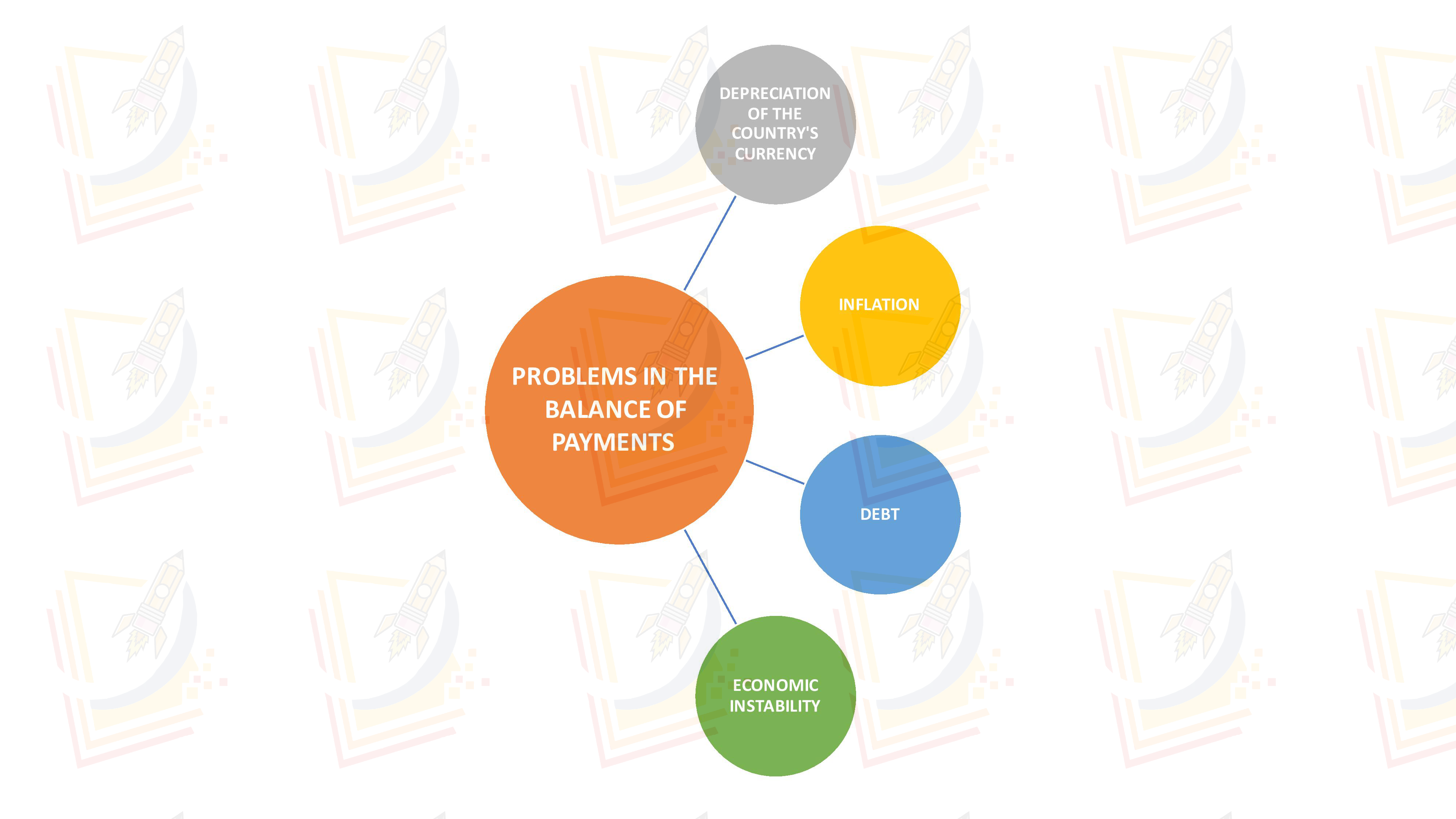MEANING
The balance of payments (BOP) is the method by which countries measure all of the international monetary transactions within a certain period. The BOP consists of three main accounts: THE CURRENT ACCOUNT, THE CAPITAL ACCOUNT, AND THE FINANCIAL ACCOUNT.
CAUSES OF ADVERSE BALANCE OF PAYMENT

- IMPORT OF MACHINES :- Since independence import of machines has increased on two ways.
- During World War II machine in Indian industries overworked so that the need arise to imports the machine.
- Industrializations were very stagent.
- IMPORTS OF WAR EQUIPMENT :- In order to defend itself against china and Pakistan, large amount of war equipments were imported by India.
- MORE DEMAND OF CONSUMPTION GOODS :- In the post war period demand not only for foreign goods but also the demand of Indian goods went up.
- PRICE DISEQUILIBRIUM :- There has been wide difference between in the domestic prices of goods and foreign prices of the goods.
- EXPENDITURE ON FOREIGN EMBASSIES :- Independent India has to establish their political relationship with foreign countries. So for that foreign countries has to established there foreign embassies.
- FOREIGN COMPETITION :- India mainly exports jute, tea and textiles but now foreign competition was growing rapidly.
- IMPORT OF GOLD :- gold is the second major import items of India after crude oil. India is one of the important consumer of gold in the world.
MEASURES TO CORRECT DISEQUILIBRIUM IN BALANCE OF PAYMENTS

- MONETARY POLICY :- Monetary policy may be devised to correct a deficit in the balance of payments of a country. The deficit occurs because of high import and exports. This is to be reversed.
- EXCHANGE DEPRECIATION :- Exchange depreciation means the decline in the rate of exchange of one country in terms of another.FOR EXAMPLE – Assume- the Indian rupee exchanges for 65 Rubles of the Russian currency. If India experiences an adverse Balance of payments with regard to Russia, the Indian demand for Ruble will be rise.
- DEFLATION :- Deflation means falling prices. Deflation has been used as a measure to correct deficit disequilibrium. A country faces deficit when its imports exceeds exports. Deflation is brought through monetary measures like bank rate policy, open market operations, etc or through fiscal measures like higher taxation, reduction in public expenditure, etc.
- DEVALUATION :- Devaluation refers to deliberate attempt made by monetary authorities to bring down the value of home currency against foreign currency. While depreciation is a spontaneous fall due to interactions of market forces, devaluation is official act enforced by the monetary authority. Generally the international monetary fund advocates the policy of devaluation as a corrective measure of disequilibrium for the countries facing adverse balance of payment position.
- EXCHANGE CONTROL :- It is an extreme step taken by the monetary authority to enjoy complete control over the exchange dealings. Under such a measure, the central bank directs all exporters to surrender their foreign exchange to the central authority.
PROBLEMS IN THE BALANCE OF PAYMENTS

Problems in the balance of payments can occur when a country experiences a deficit in its current account or a surplus in its capital account. This can lead to a number of negative consequences, including:
- DEPRECIATION OF THE COUNTRY'S CURRENCY : A deficit in the current account can lead to a decrease in demand for the country's currency, causing it to depreciate in value. This can make imports more expensive and exports cheaper, which can lead to trade imbalances and further economic problems.
- INFLATION : A surplus in the capital account can lead to an increase in the supply of money in the economy, which can cause inflation.
- DEBT : A deficit in the current account can lead to a country borrowing from other countries or international organizations to finance its trade. This can lead to an increase in debt, which can be difficult to repay and can have negative consequences for the country's credit rating.
- ECONOMIC INSTABILITY : Problems in the balance of payments can lead to economic instability, as investors may lose confidence in the country's ability to manage its finances. This can lead to a decrease in foreign investment and a decrease in economic growth.
TO ADDRESS PROBLEMS IN THE BALANCE OF PAYMENTS, COUNTRIES MAY IMPLEMENT MEASURES SUCH AS:
- CURRENCY DEVALUATION : This can make exports cheaper and encourage foreign investment in the country.
- FISCAL POLICY : Governments may implement spending cuts or tax increases to reduce the deficit in the current account.
- EXCHANGE RATE POLICY : Governments may intervene in the foreign exchange market to stabilize the exchange rate of their currency.
- TRADE POLICY : Governments may implement tariffs or other trade barriers to protect domestic industries and reduce the deficit in the current account.
